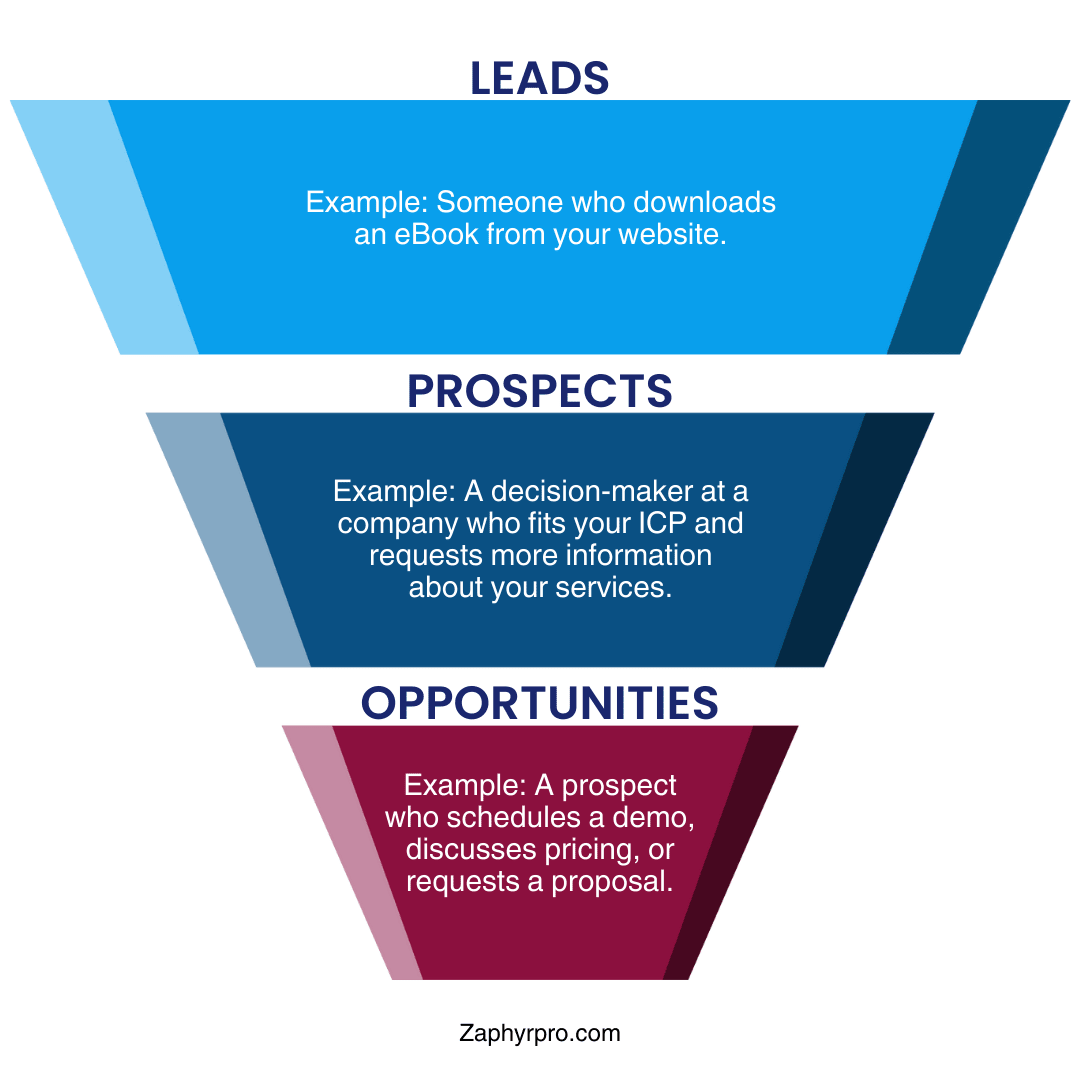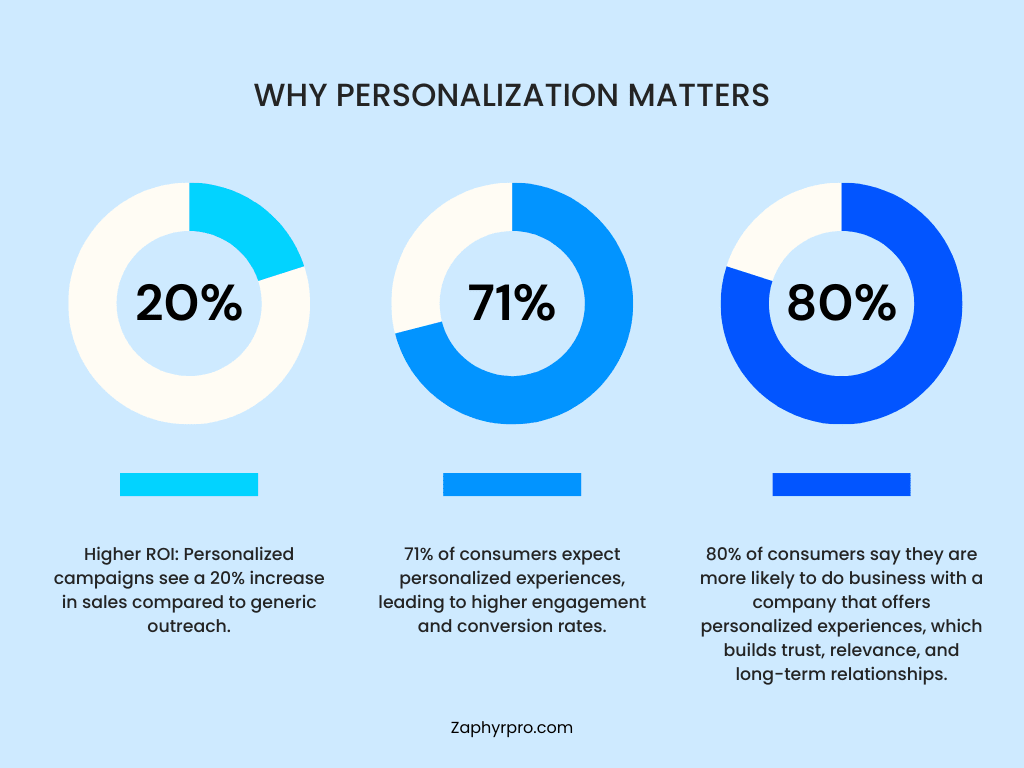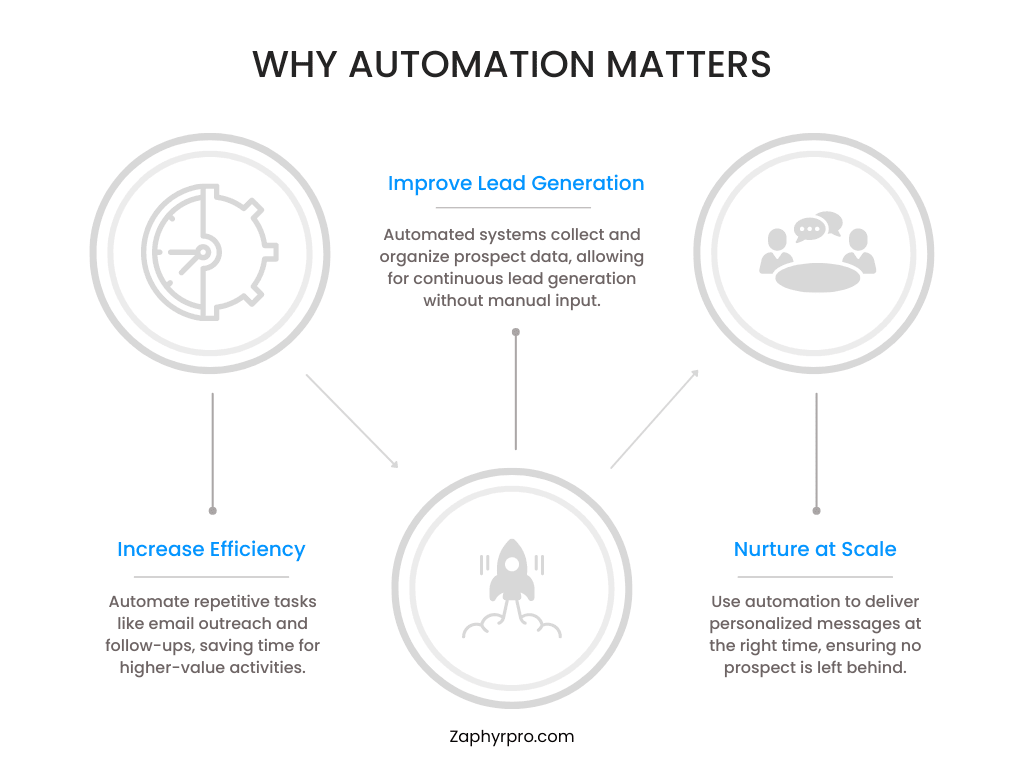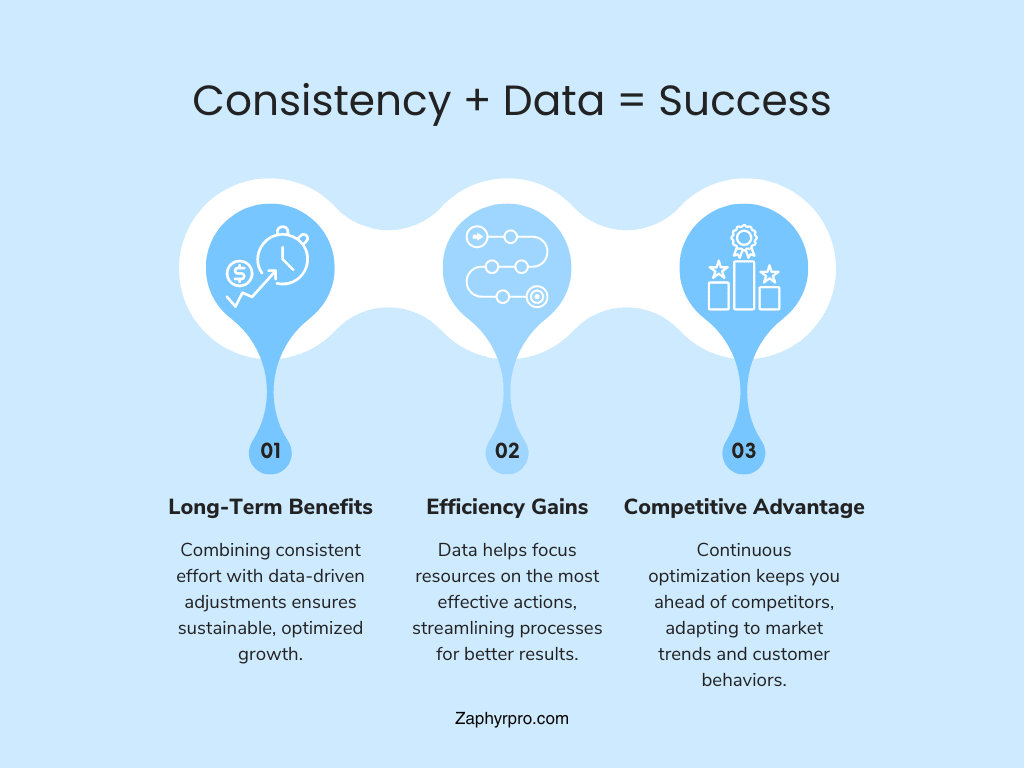Introduction
Sales prospecting is the critical first step in building relationships that lead to revenue. It’s the act of identifying and reaching out to potential clients who could benefit from your product or service. While it sounds straightforward, sales prospecting has transformed significantly in the digital age. With competition intensifying across industries, businesses must apply creative and effective techniques to stand out.
In this blog, we’ll dive into 20 proven sales prospecting methods that will not only help drive more revenue but also enhance your lead qualification processes. These methods are designed to elevate your sales game, helping you identify the right leads and convert them into long-term customers. So let’s get right to it.
What is Sales Prospecting?
At its core, sales prospecting refers to the process of searching for potential clients or customers, also known as prospects, who could benefit from your offering. It’s a key part of the sales cycle that can be divided into inbound and outbound efforts. Inbound prospecting involves attracting potential leads through marketing efforts, while outbound prospecting includes direct outreach to potential clients.
Definition and Importance for Business Growth
Prospecting ensures that your sales funnel is constantly filled with qualified leads. Without prospecting, your pipeline dries up, making it impossible to achieve consistent growth. In fact, 42% of sales reps say prospecting is the most challenging stage of the sales process, according to a HubSpot survey. However, by using the right techniques, businesses can significantly improve their chances of success.
The Difference Between Leads, Prospects, and Opportunities
- Leads are potential customers who have shown interest in your business, but you have yet to qualify them.
- Prospects are qualified leads who match your Ideal Customer Profile (ICP) and have the potential to become paying customers.
- Opportunities are prospects who are further down the sales funnel and are actively considering purchasing your product or service.

Why Effective Prospecting is Critical?
Effective prospecting builds a strong sales pipeline. Without a steady flow of qualified leads, your business is vulnerable to stagnation. Prospecting also enables better forecasting, as it offers a more predictable stream of opportunities. When done right, prospecting leads to increased revenue, improved client relationships, and a healthier sales pipeline. Let’s explore 20 effective sales prospecting methods to drive more revenue.
Effective Time Management for Prospecting

1. Block Out Time for Dedicated Prospecting
In a world full of distractions, time management is key to success in sales. Setting aside dedicated blocks of time for prospecting ensures that you are consistently reaching out to new leads. By treating prospecting as a daily ritual, you prioritize lead generation, which is the lifeblood of sales.
Actionable Tip:
Use tools like Google Calendar or Trello to schedule prospecting blocks. Productivity apps such as Pomodoro can also help maintain focus by breaking tasks into timed intervals.
2. Research Ideal Customer Profiles (ICPs)
An ICP is a detailed description of your ideal customer. Understanding your ICP allows you to target prospects more accurately, saving time and improving your success rate. A well-researched ICP should include firmographics (company size, industry, revenue) and behavioral attributes (buying patterns, challenges).
Actionable Tip:
Leverage tools like LinkedIn Sales Navigator and Crunchbase to collect data on prospects who fit your ICP. The more refined your profile, the better your prospecting outcomes will be. Well-thought out targeting will yield you more positive results than just shooting your shot blindly.
Advanced Research Techniques

3. Leverage Inbound Prospecting
Inbound marketing strategies are not just for marketers. By creating compelling content such as blogs, webinars, and eBooks, you can attract potential leads to your website. The key here is to optimize your website for conversions—whether it’s through lead magnets, calls to action (CTAs), or forms that capture prospect information.
Actionable Tip:
Invest in search engine optimization (SEO) and content marketing. Use tools like SEMrush or Ahrefs to collect data on prospects who fit your ICP. The more refined your profile, the better your prospecting outcomes will be. Well-thought out targeting will yield you more positive results than just shooting your shot blindly.
4. Social Media Outreach
LinkedIn, Twitter, and niche social media platforms are valuable tools for engaging with prospects. By consistently sharing relevant content and engaging in conversations, you can organically generate interest in your product or service.
Actionable Tip:
Join LinkedIn groups relevant to your industry and start meaningful discussions. Tools like Hootsuite can help you manage and schedule social media posts, allowing you to maintain consistency.
Leveraging Personalization and Outreach Channels

5. Warm Calling Instead of Cold Calling
Traditional cold calling can be ineffective because the prospect is often caught off-guard. Warm calling, on the other hand, involves reaching out to prospects who have interacted with your content, such as downloading a whitepaper or attending a webinar. Warm calls are far more effective since the prospect already has some level of familiarity with your brand.
Actionable Tip:
Before calling, review the prospect's activity on your website and prepare personalized talking points based on their interests.
6. Personalized Email Campaigns
Gone are the days of one-size-fits-all email blasts. Today, prospects expect personalized communication that addresses their specific pain points. Segment your email lists based on ICP criteria and craft multi-touch campaigns that nurture leads over time.
Actionable Tip:
Use email automation tools like HubSpot or Mailchimp to segment your audience and schedule personalized drip campaigns. A/B test subject lines to see which resonate best with your audience.
Holistic Multi-Channel Engagement

7. Attend Digital and In-Person Events
Industry-specific events, whether digital or physical, offer a goldmine of warm leads. Prospects attending these events are often in the market for solutions, making them more receptive to your outreach efforts.
Actionable Tip:
After attending an event, follow up with personalized messages within 24 hours. Reference specific points from conversations to build rapport and keep the dialogue going.
8. Ask for Referrals
Referrals remain one of the most effective ways to generate new leads. Satisfied clients are often willing to introduce you to others in their network who may benefit from your service.
Actionable Tip:
Create a formal referral program that incentivizes clients to recommend your business. Reward referrers with discounts, exclusive access, or other perks.
Automation and Data-Driven Prospecting

9. Utilize Marketing Automation
Marketing automation tools allow you to streamline prospecting by automating follow-up emails, nurturing sequences, and tracking engagement metrics. This not only saves time but also improves efficiency by ensuring no prospect falls through the cracks.
Actionable Tip:
Tools like HubSpot, SalesHandy, and Marketo can help you create automated workflows that trigger follow-ups based on prospect behavior, such as visiting a pricing page or downloading a resource.
10. Create Multi-Channel Campaigns
Prospects today are spread across multiple platforms, making it important to engage them through a variety of channels. A successful multi-channel campaign might include email, social media, direct mail, and phone calls.
Actionable Tip:
Tools like Salesforce or HubSpot can help you organize multi-channel outreach efforts. Track which channels lead to the highest engagement rates and focus more on those platforms.
11. Networking Through Existing Connections
Building a robust network is one of the most underrated sales prospecting methods. Leverage your existing contacts to get introductions to new leads.
Actionable Tip:
Use LinkedIn's "People Also Viewed" or "Connections" features to identify mutual contacts. Craft personalized messages referencing your mutual connection when reaching out to new prospects.
Personalized Engagement and Market Intelligence

12. Use Trigger Events
Trigger events, such as a company announcing a new round of funding, leadership changes, or product launches, present timely opportunities to reach out to prospects. When timed well, your outreach can solve a new pain point or meet an immediate need.
Actionable Tip:
Use tools like Google Alerts or LinkedIn to monitor trigger events for your target companies. Tailor your outreach to address how your product can solve specific challenges created by the event.
13. Send a Personalized Gift
Personalized gifts are an excellent way to grab a prospect’s attention and build rapport. Whether it’s a customized item or a valuable industry report, thoughtful gifts can differentiate you from competitors and create a lasting impression.
14. Be an Industry Thought Leader
Positioning yourself as a thought leader in your industry can dramatically improve your prospecting efforts. By publishing articles, hosting webinars, or speaking at conferences, you demonstrate authority and build trust with prospects.
Actionable Tip:
Regularly contribute to industry publications and create valuable content that resonates with your ICP. Focus on providing actionable insights rather than self-promotion to build genuine credibility.
Industry-Specific Targeting

15. Target Thriving Industries
Identifying industries experiencing growth or high demand can significantly boost your prospecting efforts. Industries such as technology, e-commerce, and healthcare are currently experiencing accelerated growth, creating numerous opportunities for prospecting.
Actionable Tip:
Tailor your outreach messages to align with current trends in high-growth industries. Highlight how your product or service can solve industry-specific challenges or capitalize on new opportunities.
16. Scroll Through Social Media for Insights
Social media platforms are a goldmine of insights into your prospects. By following their activity, you can gather valuable information about their interests, challenges, and goals.
Actionable Tip:
Use Twitter, LinkedIn, or even Instagram to monitor prospects’ social media behavior. Engage with their posts and add valuable comments to build connections organically before initiating a sales conversation.
Competitor Analysis and Partnerships

17. Use Competitor Intelligence
Analyzing your competitors’ customers and marketing strategies can provide valuable insights into your own prospecting efforts. By identifying gaps in their approach, you can tailor your outreach to address unmet needs.
Actionable Tip:
Use tools like SEMrush or SimilarWeb to research your competitors' traffic sources and customer demographics. Identify areas where your offering provides superior value and craft your messaging accordingly.
18. Partner with Complementary Businesses
Co-selling with complementary businesses allows you to tap into a broader network of potential leads. By forming strategic partnerships, you can leverage each other’s networks to generate shared leads.
Actionable Tip:
Identify businesses that target similar audiences but offer non-competing products or services. Create a referral agreement where both parties benefit from introducing each other to prospects.
Consistency and Data-Driven Optimization

19. Follow Up Consistently
Following up is essential to keep prospects engaged. Research shows that 80% of sales require at least five follow-up calls after the initial contact, but most salespeople give up after one or two attempts.
Actionable Tip:
Create a structured follow-up schedule using a CRM tool like Salesforce or HubSpot. Automate reminders for when it’s time to follow up and track engagement metrics to refine your approach.
20. Utilize Data to Optimize Prospecting
Data should be the backbone of your B2C or B2B prospecting methods. By continuously analyzing engagement metrics, response rates, and conversion data, you can fine-tune your outreach to optimize results.
Actionable Tip:
Use analytics tools like Google Analytics or HubSpot to track which prospecting methods are yielding the best results. Continuously refine your ICP, messaging, and targeting based on data insights.
Conclusion
In sales prospecting, consistency and adaptability are key. By using a combination of inbound and outbound strategies, and leveraging the power of personalization, data, and automation, you can significantly improve your sales pipeline and ultimately drive more revenue. The B2C and B2B prospecting methods outlined here provide a roadmap for businesses looking to enhance their sales prospecting methods and achieve sustainable growth.
Prospecting is not a one-size-fits-all process. Even the best prospecting methods require ongoing refinement, innovation, and a deep understanding of your target market. Implement these best sales prospecting methods, and you’ll be well on your way to building a stronger, more efficient sales pipeline.
Next Steps:
Begin implementing these methods by identifying which strategies align best with your ICP and sales goals. Adjust and optimize as you go, using data and feedback to continually improve your sales prospecting methods.
Need a Better Prospect List?
Boost your sales with Zaphyre’s tailored prospect list-building services. We provide verified, highly-targeted leads that align with your ideal customer profile. Start building your prospect list today!
Learn More








